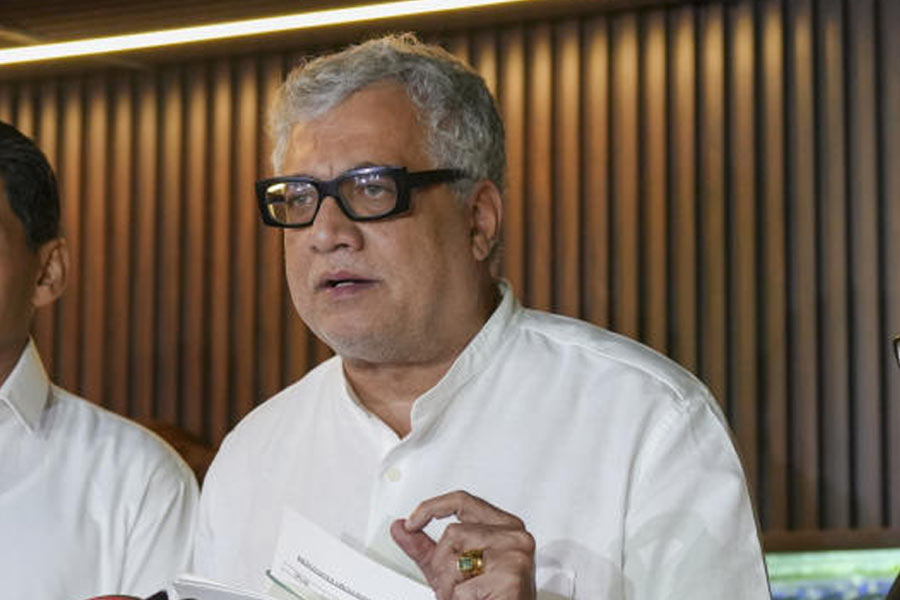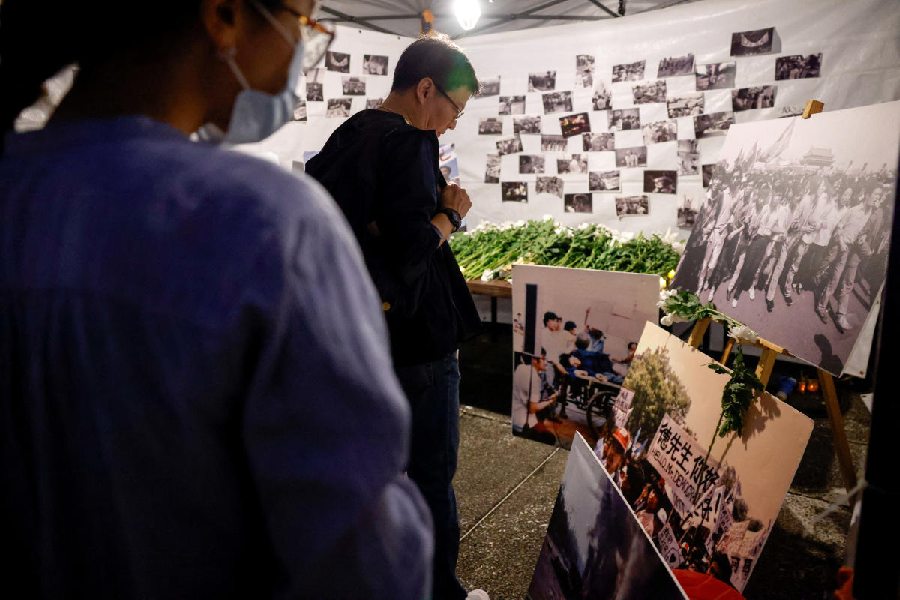 |
| A gardener tends gerberas at a private floriculture unit at Ugratara, nearly 50km from Bhubaneswar. Telegraph pictures |
Bhubaneswar, May 26: A hundred opportunities are blooming for entrepreneurs, who want to nurture the business of floriculture in the state.
The scarcity of flowers in the state has provided a golden opportunity for businessmen here to explore floriculture, which has actually turned out to be a lucrative option.
As the local market is able to meet only 10 to 12 per cent of the total flower requirement, the state has to depend heavily on other cities such as Calcutta, Bangalore, Delhi and Hyderabad. Government officials said Calcutta alone accounted for nearly 75 per cent of the import. “The business on New Year this time was to the tune of Rs 10 crore. Local florists are hardly able to meet the demands during the puja and marriage seasons,” said an officer of the horticulture department. Though concrete figures of the state’s daily requirement of flowers is not available with the department, people in this business said it would be safe to estimate that it was a Rs 50-crore industry.
Sensing opportunities in this sector, the local entrepreneurs have started entering the market. A private group began gerbera and rose cultivation on four acres at Ugratara, located nearly 50km from Bhubaneswar, supplies over 5,000 gerberas to the Bhubaneswar florists everyday.
A director of the group, Subrat Ranjan Prusty, said they had begun the project last September. “Within a span of six months, we have been able to make a name in the market,” he said, adding that they had engaged a gardener from Himachal Pradesh to look after the plants.
One flower is sold at Rs 10 to Rs 12 in the capital — almost double of what is spent on growing them. An Odia entrepreneur at Tangi near Cuttack took up the first largescale floriculture project. Government sources said a premier educational institution in Bhubaneswar had now evinced interest in starting floral cultivation on two acres. “This is a very profitable business. Since the horticulture department gives 50 per cent subsidy to start such projects, many businessmen are keen to enter this industry,” said an official.
There were over 135 florists in Bhubaneswar and nearly 2,000 people were engaged in the business, said secretary of the Bhubaneswar Flower Vendor Association Babuli Rana. “They mostly procure marigold, tube rose and rose from Calcutta. However, the exotic flowers such as lilium, orchids and carnation arrive from Bangalore, Pune, Hyderabad and Delhi,” he said.
Lotuses come from the Anshupa Lake near Athgarh in Cuttack while basil and other flowers for offering to deities come from villages on the outskirts of Bhubaneswar. Quite a few people in Cuttack are also gradually taking up the business. But, Berhampur holds the distinction of being the leader in the field of floriculture.
Official statistics show that only 7,540 hectares of the state’s 87.46 lakh hectares of irrigable land are being utilised to grow flowers. The horticulture department has, therefore, come up with an ambitious plan to provide a boost to this sector. Director of the horticulture department Sanjeev Kumar Chadha said his department had spent around Rs 1.5 crore on developing the flower market in Berhampur. “But, the whole thing is quite disorganised. Middlemen are reaping the benefits and farmers do not get more than Rs 2 for one rose that is sold in the market for Rs 8 to Rs 10,” he said.
To ensure that farmers get their due, the department would set up an auction hall in which cultivators from rural areas can take part. “We would use the kiosks installed for the Kusum Vatika project for centralised collection and trading flowers. The kiosks are lying unoccupied now,” he said.
Talking of a three-pronged strategy to promote farmers in the state, Chadha said vigorous cultivation would be taken up in Bhubaneswar, Cuttack, Puri, Rourkela, Sambalpur and Berhampur, especially in areas, which have temples.
“We are providing cold storage units for preserving the flowers for a longer duration and refrigerated vans for transporting the stock from far-off places,” he said, adding that the department was attempting lilium farming in Kandhamal.
Another window of opportunity for the local farmers would be growing Dutch roses, which would be exported to Dubai, Singapore and European countries. “We are tying up with big florists in London and other cities in Europe for the purpose,” said Chadha.
The capital city, which was once known as Mandir Malini or a garland of temples, seems to have run out of flowers with the shortage forcing people to buy the quintessential puja materials from florists. The shortfall would be felt even more with the marriage season and rath yatra round the corner.
“Earlier, we used to collect flowers from the neighbourhood to offer prayers to the gods. However, with a boom in construction activities in the city, there are hardly any flowering plants left. It is a difficult task finding flowers daily for the puja,” said Jayanta Garabadu, a priest of the 11th century Lingaraj temple at Old Town.











